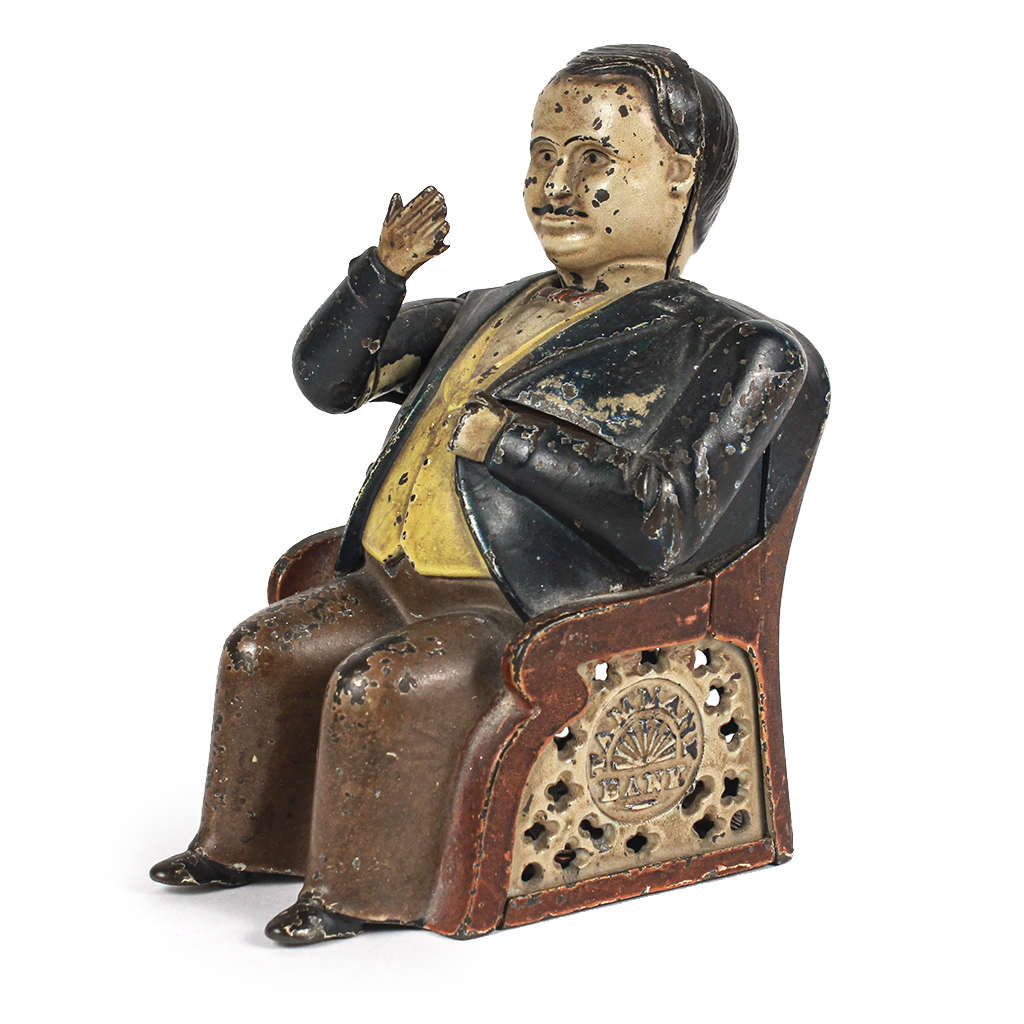Kleptocrat Bank
Mechanical “Tammany Bank,” J. & E. Stevens Company, Cromwell, Connecticut / cast iron / c. 1873
John Hall invented novelty cast iron banks designed to autonomously perform actions under the weight of a single coin. In 1873, he patented the bank pictured here, naming it the “Little Fat Man” and then “Tammany Bank.”
Synonymous with graft, the name referred to notorious “Boss” William Tweed and his infamous New York City political machine, which Tweed engineered to line his own pockets. Over his thirty years in politics, Tweed had his hand in New York governmental coffers and business interests alike. Though he held prominent positions through the years — congressman in the U.S. House of Representatives, New York State Senator, member of the New York Board of Supervisors — Tweed pulled his strings best from behind the scenes. As an appointed member of various boards and commissions, Tweed dispensed political patronage and city jobs to ensure loyal voters through Tammany Hall, the New York City political organization which by the mid-nineteenth century exerted political control over much of the city. At his peak, Tweed was the third-largest landowner in New York City, controlled stock in diverse companies, owned a prominent hotel, and held the various positions of board member, director, and president of New York railroads, banks, and other industries.
When this bank was cast in 1873, Tweed had finally been exposed and imprisoned after decades of corruption. Authorities estimated he stole as much as $45 million from New York City taxpayers, equivalent to $900 million today.
Condition
Good antique condition, with minor paint loss for a bank of this age. Nods with greedy self-satisfaction.
Measurements
5.75 inches long
4.25 inches deep
3.25 inches wide
Shipping
Free in the continental United States. If an international buyer, please contact me for a shipping estimate by clicking here.
$385
In stock
Related products
-
Out of stock
-
Out of stock
-
Out of stock
























